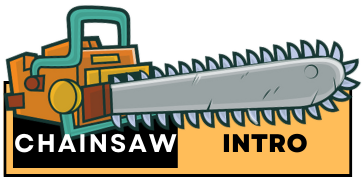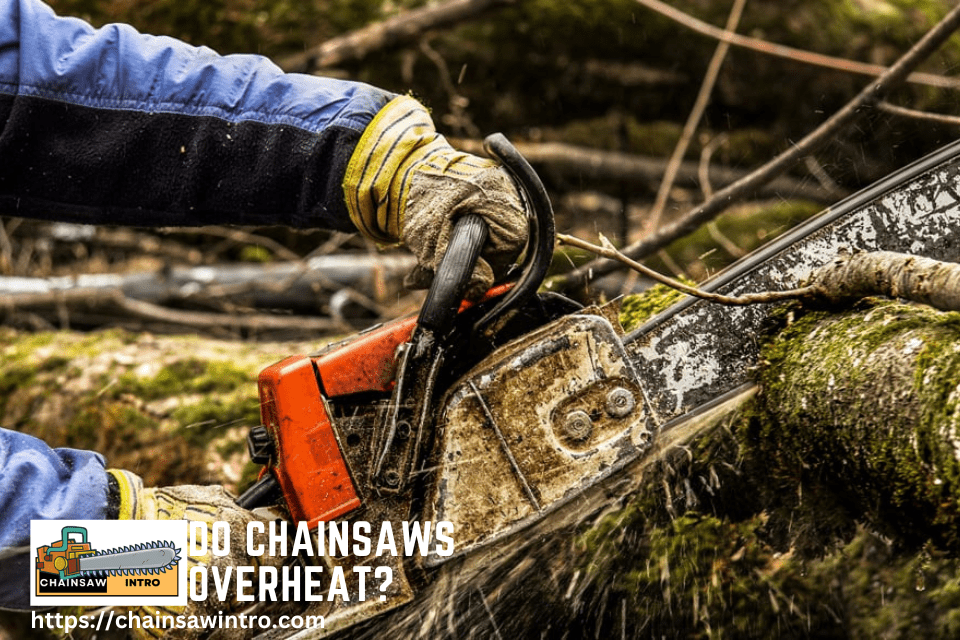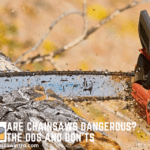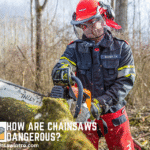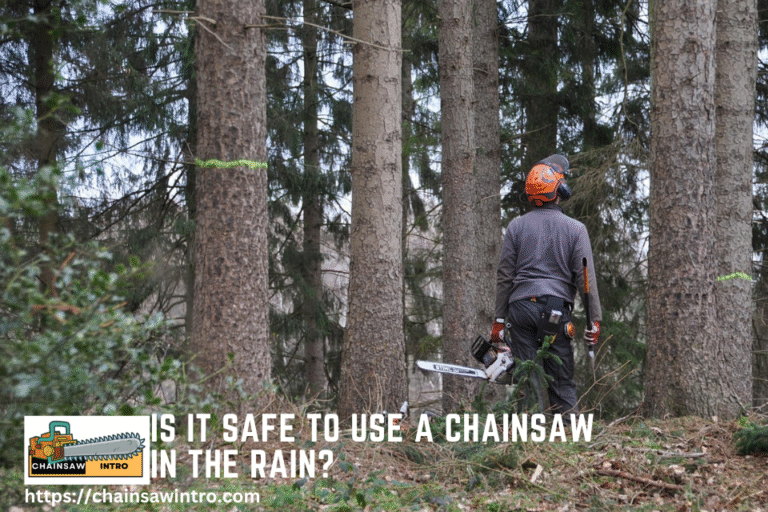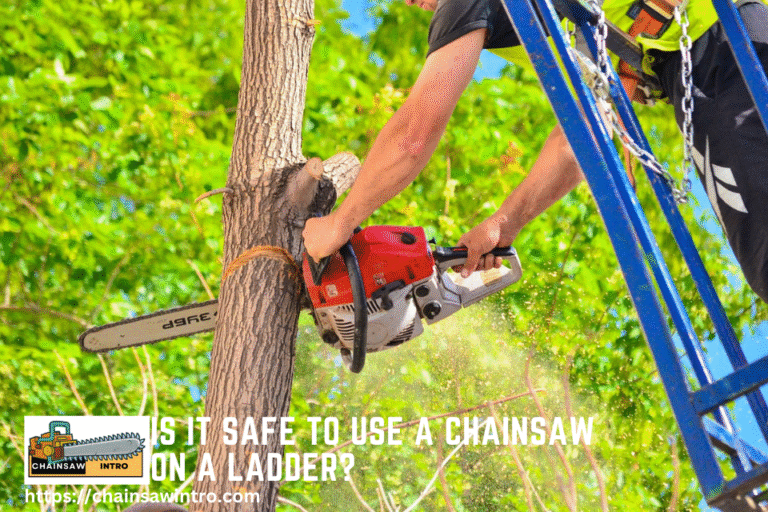A chainsaw is one of the most powerful and reliable tools for cutting wood, felling trees, and handling tough outdoor projects. But like any machine that runs on fuel or electricity, chainsaws can experience problems—one of the most common being overheating. Many users wonder: Do chainsaws overheat? The answer is yes, and ignoring the signs of overheating can lead to severe engine damage, safety hazards, and costly repairs.
In this article, we’ll explore why chainsaws overheat, the warning signs to look for, and the best practices to prevent it so your tool lasts longer and performs at its best.
My chainsaw is smoking and overheating
Can Chainsaws Overheat?
Yes, chainsaws can overheat during extended use or if they are poorly maintained. Whether it’s a gas-powered chainsaw or an electric/battery model, heat buildup happens when the engine, motor, or cutting components work harder than intended.
Gas chainsaws are especially prone to overheating because they rely on air-cooled engines. If airflow is blocked by debris or the engine is pushed beyond its limits, the temperature rises quickly. Electric chainsaws can also overheat, particularly if the motor is overloaded or the chain becomes dull, forcing it to work harder.
Overheating can lead to reduced cutting efficiency, engine damage, or safety risks like chain derailment or kickback, which contribute to over 30,000 chainsaw injuries annually as per the CDC.
Common Causes of Chainsaw Overheating
Understanding the causes of overheating is key to preventing long-term damage. Here are the most common reasons why chainsaws overheat:
Poor Airflow
Gas chainsaws rely on proper airflow to cool the engine. Clogged air filters, dust, and sawdust buildup around the vents restrict airflow, causing the engine to heat up.
Dull Chain
A dull chain forces the motor or engine to work much harder, creating excessive friction and heat. This is one of the leading causes of overheating in both gas and electric chainsaws.
Low or Improper Lubrication
Chainsaws depend on bar and chain oil to keep moving parts cool and lubricated. If oil levels are low or the oiler is clogged, the chain can overheat and damage the bar.
Overworking the Chainsaw
Using a small chainsaw on a tree that’s too large or cutting for long periods without breaks can strain the motor, leading to overheating.
Fuel and Mixture Problems
In gas saws, using improper fuel mixtures (too much oil or too little) can cause inefficient combustion and overheating.
Mechanical Issues
Worn-out spark plugs, clogged exhaust ports, or failing bearings can generate excess heat inside the saw.
Signs of Chainsaw Overheating
Recognizing overheating early prevents damage and ensures safety. Look for these signs, per 2025 FireAndSaw.com and YouTube tutorials:
- Burn Marks or Discoloration: Blue or brown marks on the bar or clutch housing indicate excessive heat from friction or engine strain.
- Reduced Performance: Sluggish cutting, power loss, or stalling suggests the engine or motor is overheating.
- Excessive Smoke (Gas Saws): Thick exhaust smoke or a burning smell signals improper combustion or oil breakdown.
- Hot Components: A hot-to-touch engine, clutch, or bar (beyond normal warmth) indicates overheating.
- Chain Issues: A loose or seizing chain, despite proper tension, may result from heat-related expansion or poor lubrication.
- Motor Strain (Electric Saws): Unusual buzzing or automatic shutoff in battery models (e.g., Ego CS2005) suggests thermal overload protection kicking in.
If these signs appear, stop using the chainsaw immediately, allow it to cool, and address the underlying cause, as per OSHA guidelines.
How to Prevent Chainsaw Overheating?
The good news is that overheating is largely preventable with proper maintenance and usage habits. Here are some tips to keep your chainsaw running cool:
1. Keep Air Vents and Filters Clean
Regularly clean the air filter and cooling fins to ensure proper airflow. Sawdust buildup is one of the fastest ways to cause overheating.
2. Sharpen the Chain Regularly
A sharp chain cuts faster and smoother, reducing the workload on the engine or motor. Chains should be sharpened after every few hours of cutting or replaced if worn.
3. Maintain Proper Lubrication
Always check the bar and chain oil reservoir before cutting. Make sure the oiler is working correctly so the chain stays cool.
4. Use the Right Chainsaw for the Job
Avoid using a small or light-duty chainsaw on large hardwood trees. Always match the chainsaw size and power to the job at hand.
5. Take Breaks During Long Sessions
Give your chainsaw time to rest and cool down if you’re cutting for extended periods.
6. Use Correct Fuel Mixtures
For gas saws, always mix fuel according to the manufacturer’s specifications. Using fresh fuel also prevents buildup and overheating.
Top Chainsaw Models with Overheating Mitigation
These models, per 2025 Home Depot and TechGearLab reviews, incorporate features to reduce overheating:
- Greenworks Pro 80V 18-inch: Brushless motor and thermal protection minimize heat buildup; ideal for medium trees. Priced at $350-$400.
- Ego CS2005 20-inch (56V): Auto-shutoff prevents motor burnout, with efficient cooling for up to 90 cuts per charge. Costs $300-$350.
- Oregon CS1500 18-inch (corded): Self-sharpening chain reduces friction, minimizing heat during prolonged use. Priced at $100-$150.
- Stihl MS 271 Farm Boss (46.6cc): Advanced air filtration and vibration-dampening reduce engine heat for heavy tasks. Costs $400-$450.
Final Thoughts
So, do chainsaws overheat? Yes—and it’s a common issue for both gas and electric models. Overheating usually stems from preventable causes such as dirty filters, dull chains, poor lubrication, or overworking the tool.
By recognizing the early signs of overheating and practicing good maintenance, you can keep your chainsaw running safely and efficiently for years.
If you want your chainsaw to last, remember this rule of thumb: keep it clean, keep it sharp, and let it breathe.
Frequently Asked Questions
Why is my chainsaw overheating?
Chainsaws often overheat due to clogged air filters, dull chains, poor lubrication, or overworking the engine. Gas models may also overheat if the fuel mixture is incorrect.
What are the signs of an overheating chainsaw?
Common signs include loss of power, excessive smoke, hot housing, burning smells, or the chain slowing down even when the engine is revving.
Can I still use my chainsaw if it overheats?
No. If your chainsaw overheats, stop immediately and let it cool down. Continued use can cause permanent engine or motor damage.
How do I prevent my chainsaw from overheating?
Keep the air filter and vents clean, sharpen the chain regularly, check bar and chain oil, use the correct fuel mixture, and avoid overworking the saw for long periods.
Do electric chainsaws overheat too?
Yes. Electric chainsaws can overheat if the motor is overworked, the chain is dull, or ventilation is blocked. However, they usually cool faster than gas models.
Can overheating ruin a chainsaw engine?
Yes. Prolonged overheating can cause engine seizure, melted components, worn bearings, and permanent motor failure, leading to costly repairs or replacement.
How Long Can You Run a Chainsaw?
Assuming you’re asking about how long the chainsaw can run without needing maintenance, the answer is that it depends on the model of chainsaw. Some models can run for over an hour, while others need to be refueled every 20 minutes or so.
Do Chainsaws Need to Cool Down?
In order to run efficiently, chainsaws do need to be cooled down periodically. This prevents the various internal components from becoming too hot and potentially warping or breaking altogether. By providing adequate airflow and using high-quality materials for the fan blades and housing you can keep your chainsaw cool even when it’s working hard. Just remember that these components will wear out over time so be sure to replace them when necessary.
I’ve spent the past 10+ years working with chainsaws in forestry, landscaping, and firewood preparation. Along the way, I’ve gained certifications in chainsaw operation and safety and built extensive experience with trusted brands like Stihl, Husqvarna, and Oregon. I enjoy sharing my knowledge through step-by-step guides, tool reviews, and safety advice so others can get the most from their chainsaws while staying safe on every job.
